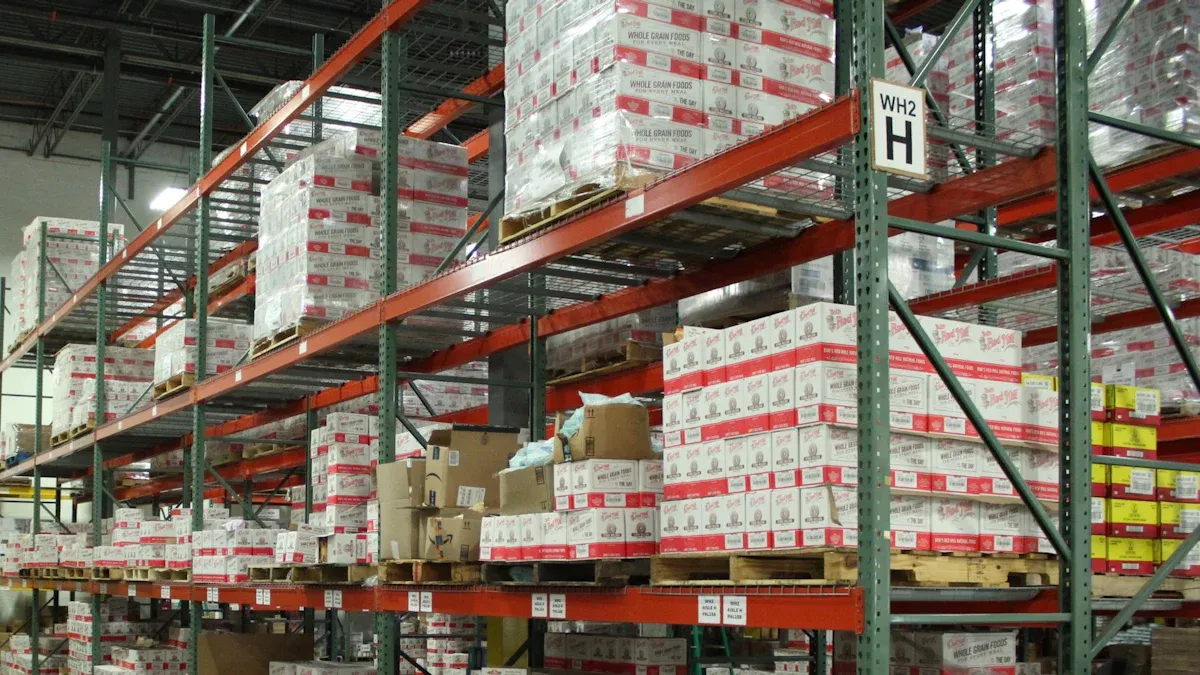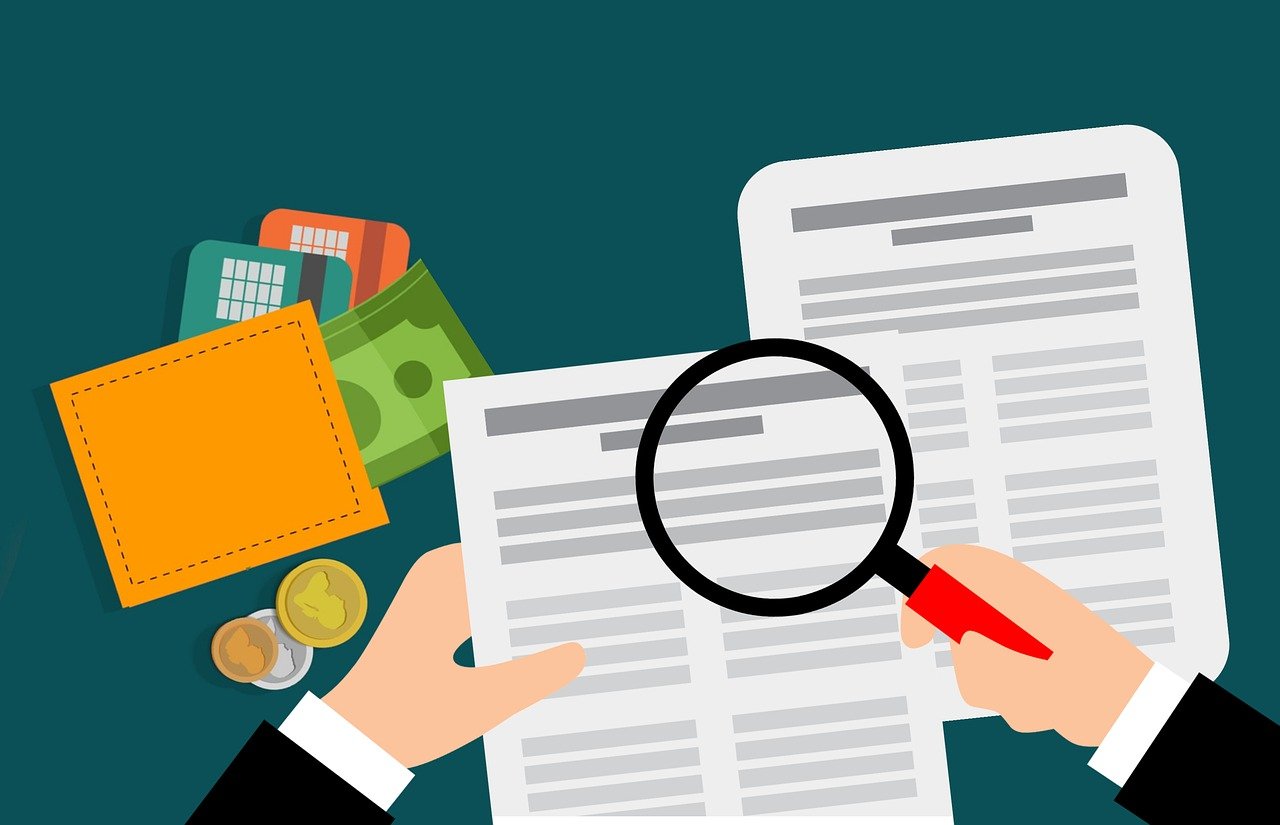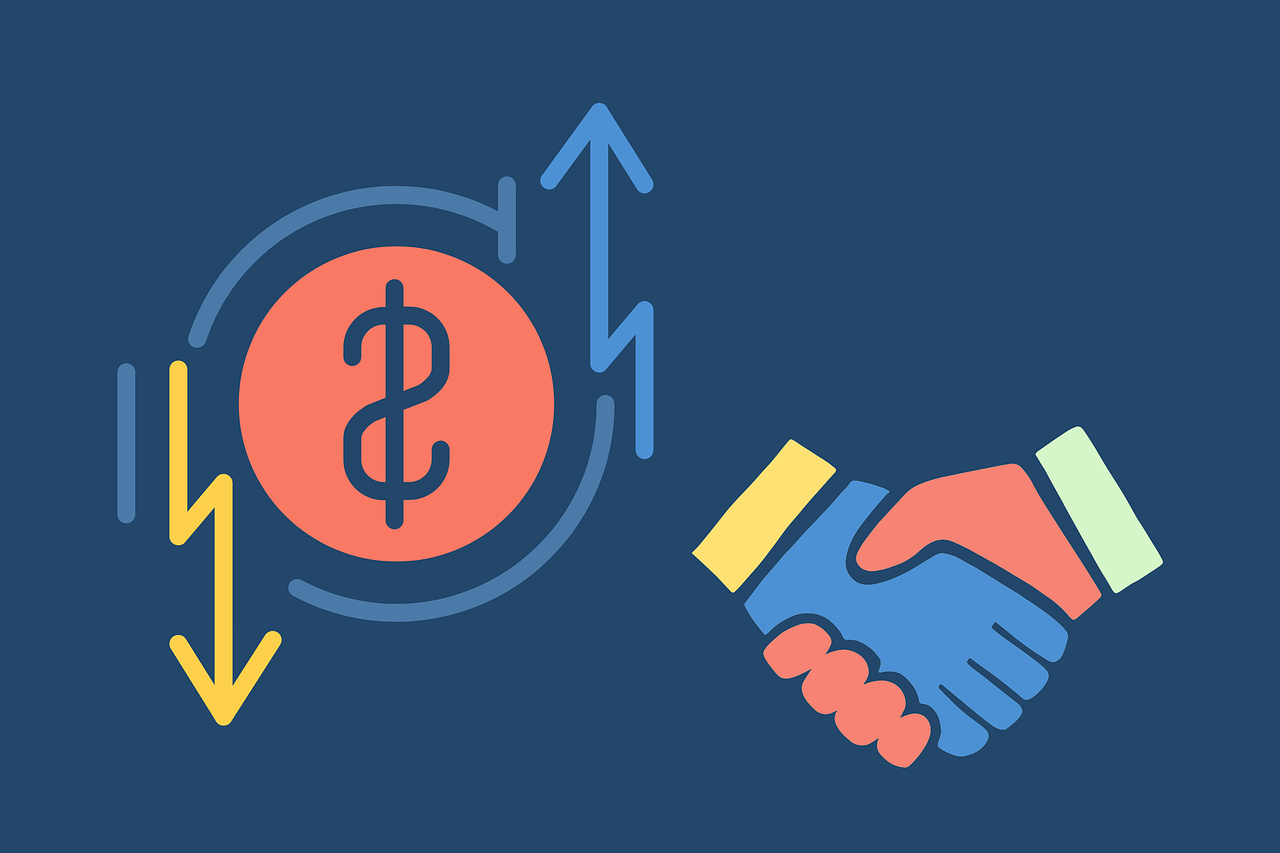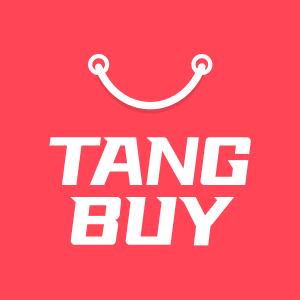Supplier Relationship Management: Everything You Need to Know for 2025

Supplier Relationship Management is about planning how to work with suppliers. Many big companies in North America and Asia-Pacific use advanced SRM tools now. They pick these tools because supply chains are more complex and digital. Good SRM helps companies manage risks and find value. It also helps them build better partnerships. When suppliers are treated as partners, new ideas can grow. This makes work faster and keeps the business strong. It helps even when there are problems.
Key Takeaways
Supplier Relationship Management (SRM) helps companies build strong partnerships with suppliers. These partnerships last a long time and help the business do better.
Good SRM lets companies save money and lower risks. It also helps them get better products and services.
Companies can group suppliers by how important or risky they are. This helps them focus on the most important suppliers.
Digital tools and automation make it quicker and easier to manage suppliers. They also help companies be more accurate.
When companies and suppliers talk openly and trust each other, they can solve problems faster. This also helps them come up with new ideas.
SRM helps companies work with suppliers who care about the environment and fair labour. This supports sustainability.
Picking the right SRM software and planning how to use it helps companies manage suppliers better. It also helps the business grow.
To make SRM work well, companies must fix problems like data silos and people not wanting to change.

Supplier Relationship Management Overview

What is SRM
Supplier Relationship Management is a planned way for companies to work with suppliers. It is more than just buying things. It means making strong partnerships that last a long time. Many top companies use SRM to get the most from their suppliers. This helps their supply chains work well.
SRM has some main parts. These help companies handle suppliers in a smart and tidy way. Here is a table that lists the main parts of SRM:
Core Component | Description |
|---|---|
Supplier Segmentation | Grouping suppliers by how much is spent, risk, or how important they are. |
Performance Management | Checking how well suppliers do by looking at delivery times and quality. |
Risk Management | Finding problems early and making plans to fix them. |
Collaboration and Communication | Sharing information and working together to solve problems and make new ideas. |
Contract and Compliance Management | Making sure everyone follows the rules and does what was agreed. |
SRM is a repeating process. Companies group suppliers, make a plan, build good relationships, carry out the plan, and check how things are going. They keep making this process better to get good results every time.
SRM Goals
The main goals of Supplier Relationship Management are clear and important. Companies want to:
Save money by working better with suppliers.
Build strong partnerships that help both sides do well.
Find risks early and have plans ready.
Make sure suppliers meet quality and ethical rules.
Get better products and services by working closely with suppliers.
Support new ideas and new ways of working.
Keep the supply chain strong, even when there are problems.
Use clear goals and regular checks to keep getting better.
Tip: Companies that treat suppliers as partners often get more new ideas and have fewer problems.
SRM helps companies move from just buying things to working together for long-term success. They focus on trust, teamwork, and shared goals.
SRM vs Procurement
Some people think SRM and procurement are the same thing. They are not. Procurement is about buying what a company needs, often for the lowest price. It is usually a short-term job. SRM is different. It is about making long-term, smart partnerships.
Here are some main differences:
SRM is about working together and sharing ideas. Procurement often only looks at price.
SRM uses digital tools to check performance and manage risks. Procurement can be slow and done by hand.
SRM builds trust and wants both sides to win. Procurement may only care about saving money fast.
SRM looks at big things, like being green and new ideas. Procurement may not.
SRM changes how companies see their suppliers. Suppliers become partners, not just sellers. This helps both sides grow and face problems together.
Why SRM Matters

Supply Chain Risks
Supply chains have many risks today. Companies face sudden changes and new rules. Unexpected events can also happen. Supplier Relationship Management helps companies get ready for these problems. It gives a clear look at suppliers. This helps companies find issues early.
Some common risks that SRM helps with are:
Change requests that slow down projects
Problems with checking important documents
Supplier incidents like late deliveries or bad quality
Not meeting strict rules or guidelines
Money problems that make suppliers unstable
Environmental or health risks that stop production
Geopolitical events that break the supply chain
SRM helps companies work with suppliers in an organised way. It makes things faster and easier. Companies use digital tools to watch how suppliers do their jobs. They can fix problems quickly. This is very important in industries like pharmaceuticals. Even small mistakes can cause big trouble.
Note: A strong SRM system helps companies build a network that can handle sudden changes and keep the business running smoothly.
Sustainability Pressures
People care more about the environment now. They want to buy from companies that do the right thing. SRM helps companies work with suppliers who share their values. It lets companies set clear rules for fair labour and ethical sourcing.
SRM uses new technology like blockchain and data analytics. This makes supply chains easier to see and understand. Companies can check where products come from and how they are made. Some good things about using SRM for sustainability are:
Better brand reputation and customer trust
Fewer risks from supply chain problems or new laws
Using resources better, which saves money
Products that fit what customers want
SRM also helps companies and suppliers work together on greener ideas. This teamwork brings better results for everyone.
Innovation Drivers
Innovation helps companies stay ahead of others. SRM is important for this. When companies have good relationships with suppliers, they get new ideas and technology. Suppliers often have special skills or products that help companies grow.
SRM helps companies work closely with suppliers. This makes it easier to share ideas and fix problems together. Some ways SRM helps with innovation are:
Helping companies become a favourite customer, so suppliers share their best ideas
Making it easier to start and grow new partnerships
Letting companies use supplier skills for new products or better ways of working
Tip: Companies that use SRM well often lead their industries in both product and process innovation.
Supplier Relationship Types

Not all supplier relationships are the same. Companies work with many suppliers. Each supplier has a different job. Some help the company grow and find new ideas. Others just bring goods when needed. Knowing these types helps companies get more value.
Strategic Partners
Strategic partners are at the top of the pyramid. They are very important for a company’s success. They help plan for the future. They often work on new projects or products with the company. Companies pick strategic partners for many reasons:
They care about things like being green or fair.
Both sides put in time, money, and people.
They plan and manage things together.
They talk often and share news.
They share both risks and rewards.
They use numbers to check how well things go.
Strategic partners join business meetings every few months. Leaders from both sides meet to talk and fix problems. They work together to make new things and share risks. Companies use tools like the Kraljic matrix to find these key suppliers. These relationships last a long time. They need trust and honesty. Both sides share good and bad results.
Tip: If you treat a supplier as a strategic partner, you can get new ideas and grow faster.
Preferred Suppliers
Preferred suppliers do more than just deliver goods. They give better prices and are more reliable. They also offer better service. Companies give them regular business. This builds trust over time. Preferred suppliers are special because they:
Always give good quality and are on time.
Help solve problems quickly.
Share new technology and ideas.
Change plans fast when needed.
Help lower costs, not just prices.
Characteristic | Description |
|---|---|
Good profits, growth, and new ideas | |
Relationship Effort | Medium to high, with regular checks |
Strategic Benefits | Early look at new products and shared skills |
Top leaders stay involved to show they care |
Preferred suppliers often see new product plans first. They join business meetings too. They are not as close as strategic partners. But they still help keep the supply chain strong and flexible.
Transactional Suppliers
Transactional suppliers are different. They give basic goods or services at the lowest price. The relationship is short and for quick needs. Companies use simple contracts and clear rules. There is not much teamwork or trust.
Companies use them for things that are not risky.
The main goal is price, speed, and delivery.
They do not talk much.
They do not share risks or new ideas.
Aspect | Transactional Supplier Management | Strategic Partner Management |
|---|---|---|
Focus | Value and new ideas | |
Duration | Long-term | |
Communication | Not much and very formal | Open and often |
Risk Sharing | Very little | A lot |
Innovation | Not expected | Expected and wanted |
Transactional suppliers are good when cost and speed matter most. Strategic partners and preferred suppliers help companies grow and manage risks better.
SRM Pillars

Segmentation
Supplier segmentation is a key part of SRM. It helps companies decide how to treat each supplier. Not every supplier is the same, so they need different plans. Segmentation means putting suppliers into groups. These groups depend on what suppliers offer and the risks they bring.
Criteria
Companies use different things to group suppliers. They look at spending, risk, and how well suppliers do their jobs. They also think about how important each supplier is. Many companies use the Kraljic Matrix. This tool puts suppliers into Non-Critical, Leverage, Bottleneck, and Strategic groups. Some companies add things like new ideas, being green, and special skills.
Tip: Check and change supplier groups often. Business needs and supplier roles can change.
Here is a table that shows how companies group suppliers and the best way to work with them:
Segment | Supplier Type | SRM Approach Highlights |
|---|---|---|
Strategic | Specialty Chemicals | Build partnerships, work together, keep supply steady |
Leverage | Branded Commodity | Make big deals, focus on saving money |
Bottleneck | Fine Chemicals | Make long deals, check quality, have backup suppliers |
Routine | Commodity Chemicals | Buy in bulk, use tech, try reverse auctions |
Alignment
Segmentation works best when it fits business goals. Companies should use data and tech to keep groups up to date. AI and analytics help spot changes quickly. Giving each group the right attention saves time and money. It also helps manage risks and build good relationships.
Strategic suppliers get more focus and planning.
Routine suppliers get more tech and less manual work.
Bottleneck suppliers need backup plans.
Leverage suppliers get deals that save money.
Onboarding
Bringing in new suppliers is an important step in SRM. A good onboarding process helps start the relationship well.
Process
The best onboarding starts with careful checks. Companies look at licences, past work, money, and rules. They set clear rules for delivery, prices, and quality. Many use online portals to collect information and cut paperwork. Giving one main contact helps things run smoothly. Automation makes tasks faster and reduces mistakes.
Check supplier background and rules.
Set clear rules and what is expected.
Use tech to collect and store information.
Give a main contact for questions.
Automate easy jobs to save time.
Change onboarding steps for each supplier.
Compliance
Compliance is more than just a rule. Companies must make sure suppliers follow laws and quality standards. They use lists and regular checks to keep information fresh. Tech helps with automatic checks and alerts. Talking openly builds trust and helps fix problems early.
Use the same steps for all suppliers.
Let suppliers use portals to update details.
Check compliance often to avoid problems.
Performance
Checking supplier performance helps everyone stay on track. It shows what is working and what needs to be better.
KPIs
Companies use key performance indicators to measure suppliers. These cover quality, delivery, cost, risk, new ideas, and more.
KPI Category | KPIs | Description |
|---|---|---|
Quality | Checks if products meet standards | |
Delivery | Checks if suppliers deliver on time | |
Cost | Cost Variance, Total Cost of Ownership | Compares real costs to planned costs |
Risk | Supplier Risk Score, Incident Frequency | Looks at risks and problems |
Innovation | Contribution to Innovation | Measures new ideas from suppliers |
Responsiveness | Responsiveness | Checks how fast suppliers respond |
Sustainability | Sustainability Practices | Checks green and fair actions |
Relationship | Communication, Collaboration | Rates how well both sides work together |
Improvement
Performance reviews are not just for finding faults. They help suppliers get better. Companies give feedback and set goals together. Regular meetings and scorecards keep everyone focused. When suppliers know what is important, they can improve. This builds stronger partnerships and better results for both.
Risk
Managing risk is a big part of working with suppliers. Companies want to spot problems before they happen. They also want to fix issues quickly when they do come up.
Identification
Companies use many ways to find risks with suppliers. They do not just guess. They follow a step-by-step process:
First, they look for possible risks and decide which suppliers to check.
Next, they give each risk a score. This score shows how likely the risk is for each supplier.
Then, they think about how much trouble each risk could cause. They also plan how to handle it.
After that, they keep an eye on these risks all the time. They update the scores if things change.
Building strong relationships with suppliers helps companies get ready for surprises.
They also teach everyone to watch out for risks and act fast if something goes wrong.
Companies use scoring systems to make this easier. Higher scores mean bigger risks. They look at things like money problems, how well the supplier works, if they follow rules, and outside dangers like storms or political changes. They use surveys, past data, site visits, and interviews to gather information. They also group risks into types, such as economic, natural disasters, or technology failures. This helps them focus on what matters most.
Tip: Companies that check risks often can fix small problems before they turn into big ones.
Mitigation
Once a company knows the risks, it needs a plan to deal with them. Good risk mitigation means acting before trouble starts. Here are some ways companies do this:
They set up backup suppliers in case one fails.
They make clear rules for quality and delivery.
They use contracts that explain what happens if something goes wrong.
They check suppliers often to make sure nothing has changed.
They use technology to get alerts about new risks.
Companies also talk openly with suppliers about risks. This builds trust and helps both sides work together to solve problems. When everyone knows the plan, they can act fast and keep the business running.
Collaboration
Working together with suppliers is key to getting the best results. Collaboration is not just about talking. It is about sharing goals and solving problems as a team.
Trust
Trust is the heart of good supplier relationships. Companies build trust by being open and honest. They share information and listen to each other. When both sides trust each other, they work better together.
Some ways to build trust include:
Setting clear goals and checking progress often.
Being fair and keeping promises.
Using technology to share updates in real time.
Solving problems together instead of blaming.
Note: Trust makes it easier to handle tough times and find new ways to win together.
Innovation
Innovation grows when companies and suppliers work closely. They share ideas and try new things. Digital tools like cloud platforms, SRM software, and AI help teams talk and track progress. These tools also help spot problems early and find better ways to work.
Companies now care more about being green and fair. They work with suppliers to cut waste, use better materials, and follow ethical rules. This teamwork leads to new products and smarter ways of working. It also helps both sides stay ahead of the competition.
Tip: When companies and suppliers work as partners, they find more chances to grow and improve.
SRM Benefits

Cost Savings
Many companies want to spend less money. Supplier Relationship Management helps them do this. Companies work closely with suppliers to cut costs. They often get better prices and pay less for delivery. There are also fewer mistakes. Some companies save up to 15% of their total spending after using SRM. Procter & Gamble saved 20% by working with suppliers. Boeing also managed costs better and worked more efficiently with SRM. The Hackett Group’s 2021 study showed top SRM programmes save an extra 3.2% on average.
Companies can save up to 15% on total spending with SRM.
Procter & Gamble saved 20% by teaming up with suppliers.
Boeing managed costs and worked better using SRM.
The Hackett Group found 3.2% extra savings from strong SRM.
SRM does not only save money right away. It also helps companies avoid expensive problems and delays. Better supplier work and more new ideas mean fewer surprises and lower costs over time.
Quality
Quality is important for every business. SRM helps companies get better products and services. Companies set clear goals and use the same steps with each supplier. This brings better results. Grouping suppliers by risk and value helps companies focus on the most important ones. Regular checks and reviews help find problems early and fix them fast.
Clear SRM goals and steady steps improve teamwork and quality.
Grouping suppliers by risk and value helps manage quality.
Regular reviews and checks lower defects and boost compliance.
Involving suppliers in planning brings new ideas and better quality.
SRM software and AI make it easier to track quality and follow rules.
Studies show that good SRM practices, like trust and teamwork, lead to fewer defects and happier customers. Companies with strong supplier relationships often see more new ideas and higher quality.
Risk Reduction
Supply chain risks can cause big trouble. SRM helps companies spot risks early and act fast. A well-known data breach in the UK military happened because of poor talks with a supplier. This shows why good SRM matters. Companies using SRM talk openly with suppliers and check in often. They work together to find risks.
Open talks and regular meetings help spot problems early.
Joint risk checks let both sides plan for trouble.
New SRM tools help find risks in real time, not just after something goes wrong.
SRM builds trust and teamwork, making it easier to fix issues quickly.
SRM also means picking the right suppliers, checking their work, and always looking for ways to improve. These steps help companies avoid supply chain shocks and keep their business running well.
Innovation
Innovation is very important in supplier relationships. When companies and suppliers work together, they can find new ideas. This helps them do things in better ways. Many top businesses see suppliers as partners, not just sellers. Partners can help make the company’s future better.
Procter & Gamble’s Connect+Develop programme is a good example. More than 35% of their new products come from working with partners. This shows that sharing ideas with suppliers really works.
SRM helps companies and suppliers work on new projects together. Here are some ways SRM helps with innovation:
It links buying to company goals and helps the business grow.
SRM tools help find suppliers who bring new ideas.
Companies give suppliers chances to share their thoughts.
Honest talks help both sides fix problems and find better answers.
Working together and giving feedback helps suppliers do even better.
When buyers and suppliers trust each other, they share ideas and solve problems together. This teamwork helps them improve faster and stay ahead of others. SRM also checks how well suppliers do, so everyone tries to get better.
Tip: Companies that use SRM to build open relationships often lead in new ideas and doing things well.
Sustainability
Sustainability is now very important for many companies. They want to help the environment and act in the right way. SRM helps companies work with suppliers who care about these things too.
By setting clear goals, companies make sure suppliers know what matters. They pick suppliers who use less energy, better packaging, and less waste. By working together, they find new ways to make products greener and work smarter.
Here are some ways SRM helps with sustainability:
Companies and suppliers set goals to cut waste and save energy.
They choose suppliers who follow strict rules for the environment and people.
Open talks help suppliers know what to do and how to get better.
Teams work together to make greener products and better ways of working.
Companies use data to check things like carbon and fair labour.
Regular checks and targets help everyone keep improving.
Good supplier relationships also help companies handle risks from the environment or social issues. When both sides trust each other, they can spot problems early and fix them. Suppliers also win. They save money, look better to others, and do better than rivals.
Note: Working closely with suppliers on sustainability brings more than just saving money. It builds trust in the brand and helps everyone care for the planet.
SRM Challenges

Data Silos
Data silos are a big issue for many companies. Different teams, like sales, marketing, HR, and procurement, keep their own data. These teams do not share what they know. This means data is kept apart in different places. Some common silos are supplier data, customer data, supply chain data, and sales or marketing data.
When data is stuck in silos, problems can happen. Teams might not have all the facts about suppliers or customers. Sometimes, the information does not match up. It is harder for teams to work together. People miss out on useful ideas. Staff spend more time fixing mistakes or searching for missing data. Decisions are made with only some of the facts. This can lead to bad choices. Companies might lose chances to sell more or give better service. There are also more risks with rules like GDPR.
Old systems and habits often cause these silos. When companies break down these walls and put data in one place, things get better. They can see the whole supply chain more clearly. It is easier to check how suppliers are doing. Companies can make smarter choices.
Tip: Putting data together helps everyone see the same facts and work as a team.
Change Resistance
Change can be hard for people. Many do not like new ways of working. When a company starts using new SRM steps, some staff may not want to join in. They might worry about losing control or making mistakes.
There are ways to help people accept change. First, set clear goals for the new system. Make sure everyone knows what success means. Get leaders to support the change. When bosses care, others follow. Talk about the good things SRM brings. Explain how it makes work easier and helps the company. Let staff help plan. Ask for their ideas and listen to their worries. Give training and support. Help people learn the new tools and feel sure of themselves. Use numbers and KPIs to show how things are going. Celebrate small wins. Share stories of early success to build trust.
Companies like Toyota and KION show that strong leaders and open talks help a lot. When staff see the value and feel supported, they are more likely to accept change.
Note: Change works best when everyone feels part of it and knows the good points.
Engagement
Getting people involved is important for SRM to work. Both teams inside the company and suppliers need to stay interested. Companies use different ways to help people join in.
Use dashboards and tracking tools to see all supplier links in one place.
Group suppliers by how important they are and how often they talk to the company.
Check how healthy relationships are by looking at how often people talk, what feedback they give, and how many contacts there are.
Look for new suppliers to keep the supply chain strong and flexible.
Talk often and clearly. Share news and talk about risks.
Ask suppliers for feedback with calls, surveys, or direct questions.
Use SRM software to make tracking and managing relationships easier.
Companies also make sure everyone knows their job. They explain rules and show how each person helps the team. By asking questions and sharing why procurement matters, they move from just buying things to building real partnerships.
Tip: Giving feedback often and talking openly helps everyone feel important and keeps relationships strong.
Balancing Value
Balancing value and cost is a big challenge for many companies. They want to save money, but they also want to get the best from their suppliers. Some companies focus too much on price. Others forget about the extra value that good suppliers can bring. The best approach is to treat each supplier differently.
Companies often group suppliers into segments. They work closely with strategic suppliers. These suppliers get to see product plans and share in both risks and rewards. For less critical suppliers, companies keep things simple and limit access to special information. This way, companies can control costs and still get new ideas.
Success is not just about saving money. Companies now look at other things, like how fast suppliers respond and how much they help with new products. They use both old and new ways to measure success. For example, they check on-time delivery and quality, but they also look at how suppliers help with innovation.
Here are some ways companies balance value and cost:
Build strong relationships with key suppliers. This helps them get early payment discounts and better deals.
Use digital tools to make communication faster and easier.
Work with suppliers to spot risks early and solve problems together.
Involve suppliers in planning and product design. This brings new ideas and better ways of working.
Trust and joint planning help companies get priority during busy times or shortages.
Tip: Companies that balance value and cost well often find they save money and get better results at the same time.
Solutions
Companies face many challenges in managing suppliers. The good news is that there are clear steps they can take to solve these problems.
Set clear expectations from the start. Everyone should know their role and what the company wants to achieve.
Listen to suppliers. Understanding their point of view helps find better solutions for both sides.
Use technology to watch for risks and manage them before they become big problems.
Value the relationship, not just the transaction. Companies should recognise when suppliers do a good job and work together on new ideas.
Talk openly and often. This helps solve issues quickly and keeps everyone on the same page.
Use different ways to communicate, like meetings, calls, and emails, to keep the conversation going.
Review roles and goals regularly. This keeps everyone moving in the right direction.
Honour commitments, such as paying on time. This builds trust and respect.
Always act with honesty and fairness. Ethics matter in every business relationship.
Companies can also use new tools to make things easier. Low-code and no-code platforms help teams build custom solutions quickly. Training helps staff and suppliers learn new systems and feel confident. Good SRM software connects with other business tools, so data is easy to find and use. Clear KPIs and dashboards help everyone track progress and spot problems early.
Note: When companies follow these steps, they build stronger supplier relationships and solve problems before they grow.
Supplier Relationship Management Technology

Technology is now very important for managing suppliers. The right tools help teams finish tasks faster and make better choices. They also keep all information in one safe place. Let’s see what top SRM software can do and what new trends are coming.
SRM Software Features
Centralised Data
SRM software keeps all supplier information in one secure spot. Teams can find contracts, contact details, and scores easily. They do not need to search through emails or spreadsheets. This main hub helps keep data current and easy to share. Strong security, like encryption and GDPR support, keeps information safe. Companies also get good customer support for onboarding and training.
Automation
Automation changes how teams work. SRM platforms can handle onboarding, send reminders, and match invoices to orders. This means less manual work and fewer mistakes. Automated payments and document sharing make things smoother for everyone. Companies set rules for approvals, and the system does the rest. Teams spend less time on paperwork and more time building supplier relationships.
Real-Time Analytics
Real-time analytics show how suppliers are doing right now. Dashboards display key numbers like delivery times, quality, and costs. If a problem happens, teams see it quickly and can act fast. These insights help spot trends and track progress. They also help teams make smart decisions. SRM software links with other business tools, so data moves smoothly and avoids silos.
Trends for 2025
AI & Predictive Analytics
Artificial Intelligence is changing how companies manage suppliers. AI helps with demand forecasting, picking suppliers, and contract talks. By 2025, more companies will use AI to automate decisions and control costs. Predictive analytics help teams spot risks before they get big. This means fewer surprises and better planning.
Sustainability Tracking
Sustainability is now very important. SRM tools will track environmental and social goals. This makes it easier to pick suppliers who care about the planet. Companies can set targets for carbon use and fair labour. The software checks if suppliers meet these goals and sends alerts if something is wrong. Focusing on sustainability builds trust with customers and partners.
Integration
Integration is key for the future. Top SRM platforms connect with ERP, procurement, and accounting systems. This smooth data flow stops double work and keeps everyone updated. Companies can use PunchOut catalogues to buy straight from supplier lists. This follows company rules. As supply chains get more complex, integration helps companies stay flexible and strong.
Tip: Companies that use modern SRM technology find it easier to manage risks, save money, and build strong supplier partnerships.
Choosing SRM
Selecting the right SRM solution can feel like a big decision. Companies want a system that fits their needs now and grows with them in the future. They also want something easy to use and safe for their data. Let’s break down what to look for.
Selection Criteria
When picking an SRM tool, companies should focus on what matters most to them. Here are some key things to check:
Look at your company’s needs and pain points. Does the tool help with supplier tracking or compliance?
Make sure the system can handle onboarding and offboarding suppliers with automation.
Check for dashboards and tools that let you see supplier performance, like delivery times and cost savings.
Pick a solution with strong risk assessment features, including AI for real-time alerts.
Find out if the tool has good communication portals for sharing updates and solving problems together.
Make sure contract management is easy and helps avoid conflicts.
See if the system works well with your current ERP or accounting software.
Think about how the tool will grow with your business and how long it takes to set up.
Choose software that is simple to use and comes with training.
Look for flexible workflows that you can change as your business changes.
Make sure the SRM tool matches your business goals and helps with supplier teamwork and risk control.
Scalability
A good SRM system should grow with your company. If your business gets bigger or changes, the tool should keep up. It should handle more suppliers, more data, and new rules without slowing down. Companies should ask vendors about how the system works for both small and large teams.
User Experience
If a tool is hard to use, people will avoid it. The best SRM solutions have clear menus, simple dashboards, and easy steps for each task. Training and support should be available for everyone. When staff find the system friendly, they use it more and make fewer mistakes.
Security
Keeping data safe is a must. Companies should pick SRM tools with strong security, like encryption and regular updates. The system should follow industry rules and protect against data leaks. Good security builds trust with both staff and suppliers.
Alignment
The SRM solution should fit with the company’s bigger plans. It should help teams work together, share information, and reach business goals. Companies should check if the tool supports their values, like sustainability or innovation. A good fit means better results and happier teams.
Implementation
Rolling out a new SRM system takes planning. Here are some steps that help:
Set clear agreements for payments, prices, and service.
Use supplier portals to make onboarding and data sharing easy.
Monitor supplier performance with real-time dashboards.
Use risk tools to spot problems early.
Keep contracts up to date with regular reviews.
Link the SRM tool with other business systems for smooth data flow.
Train staff and suppliers so everyone feels confident.
Stay open to new trends like AI and sustainability tracking.
Tip: Companies that plan well and keep everyone involved see better results from their SRM systems.
SRM Best Practices

Collaboration Culture
A strong collaboration culture helps teams and suppliers work well together. People at the company talk openly with suppliers. They share their goals and listen to each other’s ideas. This teamwork helps everyone trust each other. When trust grows, suppliers feel important. They want to help the company do well.
Teams can hold regular meetings to keep everyone informed. They can use shared online spaces for documents and news. Some companies use feedback forms to learn what suppliers think. These steps help solve problems quickly.
Tip: Talking openly and showing respect makes everyone feel like one team.
Continuous Improvement
Continuous improvement means always trying to get better. Companies do not wait for problems to show up. They check how things are going and ask, “How can we do better?” Teams use scorecards to track how suppliers are doing. They look at delivery times, quality, and costs.
If something is not working, they talk with suppliers. They set new goals and agree on ways to fix things. Training helps suppliers learn new skills. Some companies give rewards to suppliers who improve a lot.
Here are some ways to keep getting better:
Check supplier performance every month.
Share good ideas between teams and suppliers.
Use feedback from both sides to make changes.
Celebrate small wins to keep everyone happy.
Future Trends
The future will bring new ways to manage supplier relationships. Digital tools will become more important. Artificial intelligence will help spot risks before they cause trouble. More companies will use real-time data to make faster choices.
Caring for the planet will matter even more. Companies will pick suppliers who care about the environment. They will track things like carbon use and fair work. Teams will work with suppliers to find greener ways to do things.
A table below shows some trends to watch:
Trend | What It Means for Companies |
|---|---|
AI and Automation | Faster choices and fewer mistakes |
Real-Time Analytics | Quick fixes for supplier problems |
Sustainability Focus | Greener supply chains and products |
Closer Partnerships | More trust and shared success |
Note: Companies that follow these trends will stay ahead and build stronger supplier partnerships.
Supplier Relationship Management lets companies make strong partnerships with suppliers. Teams can spend less, lower risks, and get new ideas. They should look at their SRM plans now and try better tools or ways of working. A good SRM plan helps businesses get ready for changes and to grow.
The future will be good for those who keep getting better and work well with their suppliers.

FAQ
What is the main goal of Supplier Relationship Management?
SRM helps companies and suppliers work well together. Companies want to spend less, avoid problems, and get better things. Good SRM also helps teams share ideas and work as one group.
How does SRM differ from regular procurement?
Procurement is when a company buys things it needs. SRM is about building long-term links with suppliers. With SRM, companies and suppliers talk more and fix problems together. Procurement usually just looks at cost.
Why do companies segment their suppliers?
Companies put suppliers into groups to manage them better. They pay more attention to the most important ones. For others, they use simple steps. This saves both time and money.
Tip: Segmentation helps teams focus on what matters most.
What technology features should an SRM tool have?
A good SRM tool should include:
All supplier data in one place
Automation for simple jobs
Live analytics
Easy links to other systems
These features help teams work faster and make smarter choices.
How can SRM help with sustainability?
SRM lets companies set clear rules for suppliers. They can check things like carbon use and fair work. Companies pick suppliers who care about people and the planet.
Sustainability Benefit | How SRM Helps |
|---|---|
Lower carbon use | Tracks supplier data |
Fair labour | Checks compliance |
What is the biggest challenge in SRM?
Many teams have trouble with data silos. Information gets stuck in different places. This makes it hard to see everything. Companies fix this by using one system for all supplier data.
Can SRM help small businesses?
Yes, SRM works for any business size. Small businesses can use simple SRM tools to track suppliers and save money. They can also build trust without spending a lot.
Note: Even small steps in SRM can make a big difference.

TangBuy: A Smarter Way to Dropship in 2025
If you're looking to stay competitive with dropshipping in 2025, speed and trend-awareness are key. TangBuy helps you stay ahead with real-time product trends, fast fulfilment, and factory-direct sourcing. With over 1 million ready-to-ship items, 24-hour order processing, and seamless Shopify integration, TangBuy makes it easier to test, scale, and succeed in today's fast-moving eCommerce landscape.
See Also
Mastering Profitable eBay Selling Strategies For 2025 Success
Essential eBay Dropshipping Advice To Boost Seller Success 2025
Comprehensive Walkthrough For Wholesale Online Selling In 2025
Detailed Blueprint To Start Your Dropshipping Venture In 2025

